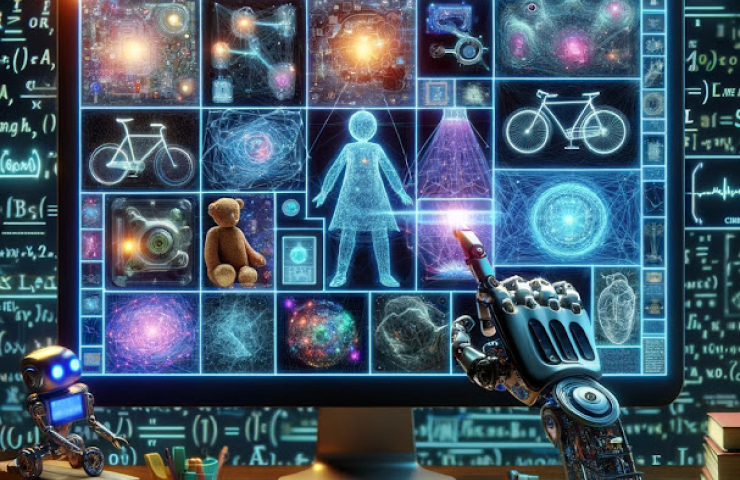
Imagine stepping into the world of artificial intelligence and computer vision, where computers learn to see and understand the world around them, much like humans do. In this fascinating realm, a groundbreaking paper titled “Hierarchical Adaptive Self-Supervised Object Detection,” authored by the brilliant minds of Shengcao Cao, Dhiraj Joshi, Liang-Yan Gui, and Yu-Xiong Wang from the University of Illinois at Urbana-Champaign and IBM Research shines brightly as a beacon of innovation.
At its core, the paper introduces a method named HASSOD, which stands for Hierarchical Adaptive Self-Supervised Object Detection. But let’s break that down into simpler terms. Imagine teaching a child to recognize and name objects around them, like a toy or a chair, without showing them pictures or explicitly telling them what each object is. That’s quite a challenge, right? Well, HASSOD teaches computers to do just that – to detect and understand objects in images all by themselves, mimicking how humans learn from observing the world.
The approach HASSOD takes is quite clever. It groups different parts of an image into what it believes to be objects, much like assembling a puzzle without having seen the picture on the box. This process is done through something called hierarchical adaptive clustering, which sounds complex but is essentially a smart way of grouping similar things together based on their appearance and how they relate to each other in terms of composition. For example, it can recognize that wheels and handles are parts of a bicycle and understand the bicycle as a whole object. This capability is a significant leap forward because it helps the system not just see objects but also understand how they are put together.
One of the coolest aspects of HASSOD is its use of the Mean Teacher framework. This concept might make you think of a strict teacher with high expectations, but it’s a technique where a more knowledgeable model (the teacher) helps a less knowledgeable one (the student) learn better. This is done in a way that’s smooth and efficient, avoiding the need for repetitive and time-consuming training sessions that were a drawback of earlier methods.
Now, let’s talk results, which are truly impressive. HASSOD outperforms its predecessors by a significant margin. It boosted the Mask AR (a measure of how well the system can detect and delineate objects) from 20.2 to 22.5 on the LVIS dataset and from 17.0 to 26.0 on the SA-1B dataset. These numbers might not mean much at first glance, but in the world of object detection, they represent a substantial improvement, achieved with fewer images and less training time than previous methods required.
The impact of HASSOD extends far beyond the realms of academia and research labs. By enhancing the ability of machines to understand the visual world in a self-supervised manner, HASSOD paves the way for advancements in numerous applications that benefit society. From self-driving cars that better understand their surroundings to more intelligent surveillance systems and robots that can navigate complex environments, the possibilities are vast and exciting.
“Hierarchical Adaptive Self-Supervised Object Detection” by Cao et al. is not just another technical paper. It’s a story of how technology is inching closer to mimicking human learning processes, opening up new frontiers in artificial intelligence and computer vision. By breaking down complex technical details into understandable concepts, we can appreciate the ingenuity and potential of HASSOD to transform our world, making it an exciting time to be alive and witness these advancements.

Our vision is to lead the way in the age of Artificial Intelligence, fostering innovation through cutting-edge research and modern solutions.